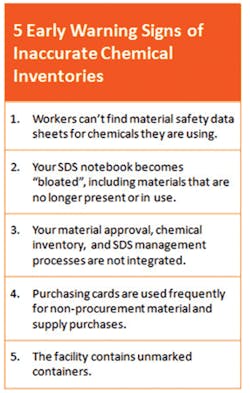Anyone with children has heard these dreaded four words countless times on family car trips: "Are we there yet?" Likewise, with OSHA's adoption of the Globally Harmonized System (GHS) into the HazCom 2012 standard (HCS 2012), you might be asking: "Are we there yet?"
First, let's compare current status of the regulatory timeline versus organizations' real-life implementation schedules. We are about 16 months into the overall 36-month GHS transition period prescribed for the United States. Roughly starting in June 2012 and effectively ending June 1, 2015, when chemical manufacturers, importers, distributors and employers have to achieve compliance with all modified provisions of this final rule (except for minor exceptions), approximately 40 percent of the transition calendar has elapsed.
Based on our observations, companies generally are on target to hit the Dec. 1 employee-training deadline. They are acquiring or building the necessary content and scheduling training sessions. We're in good shape there.
With respect to updated safety data sheets (SDS) by June 1, 2015, we're not seeing as much progress from manufacturers in updating their chemical SDS to be GHS-compliant or in their customers receiving updated documents. Collectively, we estimate that less than 20 percent of the safety data sheets in circuHow do you ensure that you're on track? First, consider each of the following five elements for your GHS transition: training, chemical inventory, SDS updates, labeling and project auditing.
Chemical manufacturers and companies producing regulated substances have a few additional responsibilities for their own transition. Chemical manufacturers must re-classify, re-author and re-distribute updated SDS and product labels for their customers. Re-classification requires chemical producers to determine the hazard classes (physical, health, environmental) of chemicals and, where appropriate, the category per class.
How Companies Are Transitioning
By now, you should have a GHS transition plan in place. This plan outlines your organization's timetables, internal resources required, external dependencies including suppliers, as well as budgets for implementation. Your transition plan should account for the following activities: employee training; chemical-inventory efforts; SDS updating; re-labeling secondary containers; and an auditing/tracking progress. I recommend at least a six-month buffer before each deadline to account for unexpected roadblocks, either internal or external.
Training – You have just a few more months until all your employees must be trained; the deadline is Dec. 1 for U.S. businesses. The most important changes to communicate should focus on how to read the updated labels and SDS, understanding the new pictograms and what the various signal words, hazard statements and precautionary statements mean. One potential source of confusion is the way GHS classifies hazards. In current NFPA and HMIS label ratings, "4" is the most hazardous and "1" is the least hazardous. However, in GHS nomenclature, "1" is the most hazardous. Therefore, ensure that employees are clear on the rating changes and how to respond. Employers can use alternative labeling systems (GHS and HMIS or NFPA); however, it will create a greater burden of education on the employer and employee to ensure comprehension.
Performing a chemical inventory – The fundamental purpose of OSHA's hazcom initiative is to assist and ensure that organizations have solid chemical-management programs to keep workers safe. In my experience, an accurate chemical inventory is the foundation for your overall chemical-management initiatives. Similar to building a house, periodic chemical inventories will ensure that there are no cracks in your foundation. This data will help you identify and quantify hazards and risk levels by work area, by facility and for the entire corporation. By doing so, you are able to reduce risk, overall expense for chemical-management efforts and corporate liability.
Updating safety data sheets – Plan on updating the majority of your current SDS since your suppliers should be supplying you with updated ones in the new GHS format. Your SDS updates should be occurring much more frequently than you have been accustomed to in the past. As noted above, while we're seeing some major chemical suppliers updating their SDS to the GHS format, most have not yet been updated. Therefore, get ready for the avalanche!
This sounds simple enough, but this is the biggest nut to crack. First, determine whether you want to update your SDS notebooks yourself with your own company resources or if you want to outsource this task. As with many other non-core activities, most companies outsource this function. Current SDS software and service providers already have catalogs of materials and safety data sheets and have an established process for acquiring, updating and managing them for organizations large and small. That said, make sure that your SDS-management vendor has updated its software to handle the new GHS data and classifications.
Since GHS was adopted differently in different regions of the world, hazard classifications may vary and you may see many more versions of safety data sheets depending on the country classifications and native language requirements. The GHS SDS will be specific to country and language. Additionally, if you are operating in international facilities or have multi-lingual speakers in your organization, ensure that your SDS support a multi-language, multi-country approach.
Labeling – Labeling requirements have changed, for both chemical manufacturers as well as employers. There is guidance on the OSHA web site (https://www.osha.gov/dsg/hazcom/) for manufacturers and employers on what GHS requires for the new labels. For manufacturers generating product labels, changes include the fact that pictograms must be outlined in red and chemical manufacturers and importers must provide a label that includes product identifier, signal word, hazard statement(s), precautionary statement(s) and pictogram(s), as well as name, address and telephone number of the chemical manufacturer, importer or other responsible party.
For employers managing workplace labels, OSHA has not changed the general requirements for workplace labeling. Employers can continue to use existing labels under the current standard as long as the labels are legible, all hazards are disclosed and there is no conflict between the label and the hazards indicated on the manufacturer SDS. If the employer chooses to use the pictograms on the workplace labels, these pictograms may have a black border, rather than a red border. Employers may continue to use alternative rating systems such as NFPA or HMIS as long as they are consistent with the requirements of the hazard communication standard and the employees have immediate access to the specific hazard information.
Auditing your progress – The responsibility for implementing the provisions of HCS 2012 lies with you, the employer. Therefore, you are responsible for your internal-transition projects like training as well as securing updated SDS from your suppliers. Tracking internal process items such as employee training and chemical inventories can be fairly straightforward using training software or simple spreadsheets. However, tracking the number and percent of updated GHS safety data sheets from your vendors can be a little trickier.
There is plenty of help out there, including the OSHA website as well as other resources, so take advantage of the guidance of industry resources and peers in your efforts
Kraig Haberer is the COO of SiteHawk, an SDS-management and chemical-data solutions provider. For more information, please visit http://www.sitehawk.com.


